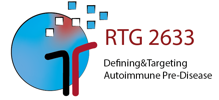MD A5: Establishing a human 3D skin model for pemphigus vulgaris
Bioengineering is concerned, among other things, with the production and utilization of artificial tissues, organs or organ components for basic science, drug discovery and regenerative medicine. Up to now, animal experiments have been considered the gold standard for preclinical testing of substances that are to be used in patients; however, it remains controversial how meaningful these mostly murine results are for mapping human diseases. Human 3D skin models (with epidermis, dermo-epidermal junction and dermis) can make an important contribution to the standardized performance of experiments without directly relying on patient material of living or deceased individuals and corresponding ethical votes. At the Lübeck Institute of Experimental Dermatology (LIED), a standardized protocol for the in vitro generation of human 3D skin has been established, which can be used experimentally for various questions.The first step is to learn how to perform the patient-independent 3D full-thickness skin model in the laboratory at the LIED and acquire all necessary knowledge. Next is the optimization of the model in terms of culture conditions. Further, the 3D model shall be used for serological diagnosis of autoimmune dermatoses (especially of pemphigus vulgaris and pemphigus foliaceus). Finally, we try to establish the 3D skin as a model for pemphigus vulgaris while injecting the monoclonal antibody PX4-3 into the skin specimens which is directed against desmoglein 1 and 3 and causes split formation in the basal layers of the epidermis.

- Projects
- 1st Generation
- A: Defining Autoimmune Pre-Disease
- B: Targeting of Autoimmune Pre-Disease
- Associated projects
- Medical doctoral researcher projects
- Concluded projects
- Doctoral researchers
- Medical doctoral researchers
- MD A1: Investigation of the influence of specific CDK inhibitors on neutrophil activation
- MD A2: Anatomical expression of target antigens in autoimmune blistering dermatoses as markers for lesion formation
- MD A3: Structural characterization of skin-directed autoantibodies and their interaction with the antigen to gain insights into autoimmune pre-disease
- MD A4: Do interactions between AT1R autoantibodies derived from patients with systemic sclerosis and endothelial cells lead to endothelial dysfunction?
- MD A5: Establishing a human 3D skin model for pemphigus vulgaris
- MD A6: Assessing vasculopathy in systemic sclerosis using optical coherence tomography
- MD A7: Identification of autoantibodies contributing to the break of immunotolerance in immunization induced mucous membrane pemphigus mouse model
- MD A8: Impact of angiotensin II type 1 receptor antibodies on endothelial dysfunction in systemic sclerosis
- MD A9: Impact of glycosylation on IgG4-induced signaling in neutrophils
- MD A10: Testing a new single chain variable fragment for pemphigus foliaceus in the human skin organ culture model
- MD A11: Impact of glycosylation on IgG3-induced signaling in neutrophiles
- MD A12: Screening for inhibitors to prevent keratinocyte dissociation
- MD A13: Investigation of the local and systemic complement activation in bullous pemphigoid patients
- MD A14: Impact of different IgG subclasses and glycosylation patterns on immune complex-induced signaling in neutrophils
- MD A15: Novel target antigens of the lower basal membrane zone as inducers of autoimmunity of bullous autoimmune dermatoses
- MD A16: Identification of the major epitope of the BP180 ectodomain recognized by serum IgA autoantibodies of patients with pemphigoid diseases – IgA autoantibodies as prognostic marker?
- MD A17: Autoantibody-mediated effects on endothelial and immune cell signaling in systemic sclerosis
- MD A18: Molecular and cellular characterization of pre-autoimmune effects induced by aging in mice
- MD A19: Immunogenic effects of Staphylococcus aureus toxins in autoimmune vasculitis
- MD B1: Testing the effect of kinase inhibitors in the human skin organ culture model for pemphigus vulgaris
- MD B2: Investigation of cigarette smoking-induced autoantibodies against human airway epithelial cells in patients with chronic obstructive lung disease
- MD B3: Contribution of taurine, pyridoxine and pantothenic acid to the pathomechanism of pemphigus vulgaris
- MD B4: The influence of prednisolone treatment on split formation in the human skin organ culture model for pemphigus vulgaris
- MD B5: Molecular characterization of the pre-autoimmune effects of Western diet in healthy mice
- MD B6: Testing established MAP kinase inhibitors in a different approach of the human skin organ culture model for pemphigus vulgaris
- MD B7: Testing the effect of kinase inhibitors in the human skin organ culture model for pemphigus foliaceus
- Ass. doctoral researchers
- Ass. medical doctoral researchers
- 2nd Generation
- 1st Generation






